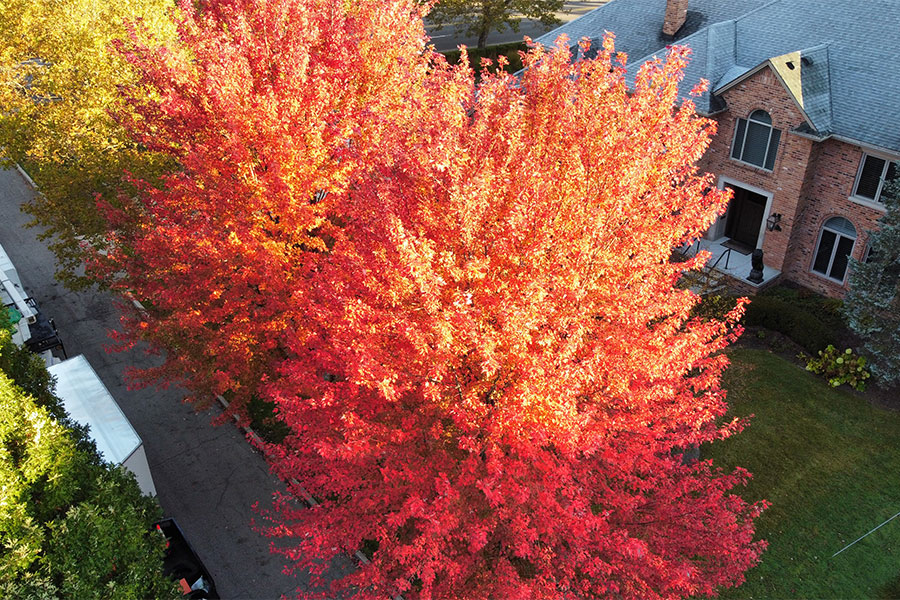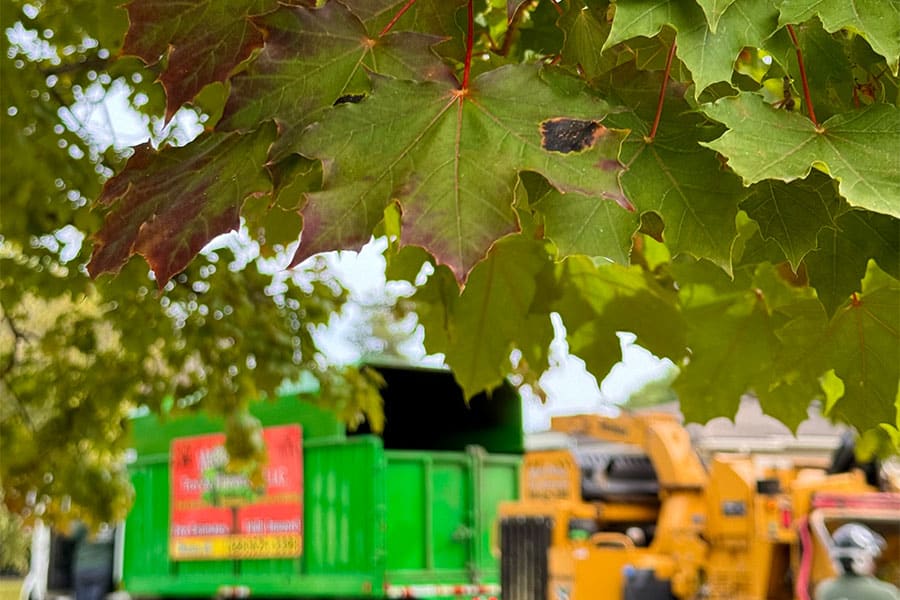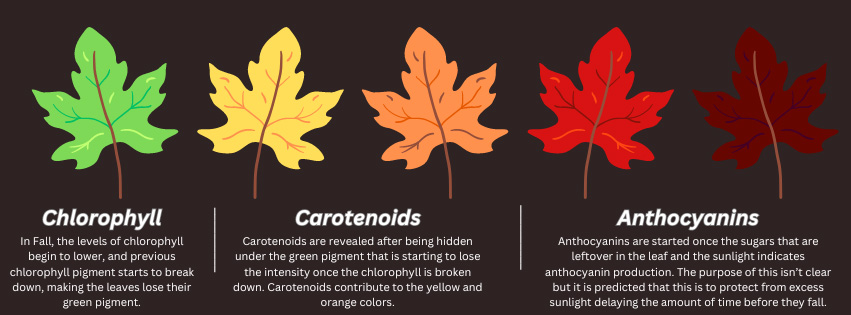So there I was, driving around running errands a couple weeks ago, and thats when it hit me- it’s the middle of September and the trees are starting to show their golden orange leaves, which tells me “fall is coming”. But at the same time, it is still 85 degrees outside, and I am blasting the AC to cool down. Making me wonder, what is going on Michigan? Is it summer or fall? Let’s be real here- Michigan is notorious for acting this way, and we are able to experience all four seasons in the span of 48 hours.
And don’t take this in the wrong way, but we all know what this means. Soon EVERYTHING is going to turn into a “pumpkin spiced” version of itself. I’ve seen coffee and candles turn into pumpkin spice, which is normal, but on the other hand I saw pumpkin spiced deodorant…I hoped it wasn’t real, but I just looked it up again, it is.
Seeing everything turn into a orange version of itself it made me think, what makes our trees turn into their glorious colors that we look forward to every year? The yellows, oranges, and reds that leave us in awe every fall but how do they do it? I’ve learned it comes down to basic photosynthesis, complex science in the tree formation, years of evolution, and a lot of pigments.
Introducing Chlorophyll: The Summer Superstar
During the spring and summer, trees are a bright green with a ton of leaves, it’s all part of
photosynthesis. Trees turn all of the sunlight they absorb into energy, like tiny solar panels that fuel their growth. This is possible by a green pigment that dominates every leaf called
chlorophyll. Chlorophyll is essential for photosynthesis and is responsible for absorbing sunlight and converting it into energy. This produces sugars to feed the tree, keeping it healthy, strong, and continuously growing year after year.
But when fall time rolls around and the days start to shorten, trees begin to prepare for winter and go into dormancy, which is their version of hibernation. They will start a new diet that slowly reduces their chlorophyll production. The trees will break down the remaining
chlorophyll and recycle it back into the branches and roots, making their leaves lose the green filter that was covering them- making all the other colors that were hiding underneath start to be revealed.
Introducing their True Beautiful Colors

As chlorophyll fades away and the trees start to prepare for the winter, the other pigments like carotenoids that were overshadowed by the dominant green of chlorophyll, start to become revealed and give us all of the fall colors. Carotenoids give us those beautiful yellow and orange shades and are also found in corn, carrots, bananas, daffodils and more.
Some trees give us that shining gold color (we’re looking at you, Hickories and Ashes), others like Sugar Maples, Sweetgum, and Dogwood trees turn into a deeper color resulting in a bright red or a deep purple foliage (0ur personal favorite). We can thank anthocyanins for glorious reds that suit every fall season.
Anthocyanins are a red pigment that makes cranberries, red apples, blueberries, plums, and cherries have red and purple colors. Unlike carotenoids, anthocyanins are produced in the fall while carotenoids are present in the leaves all year. There are a couple different theories of why trees create anthocyanins, the main theory is it can act as a sunscreen to the tree, protecting the leaves from damage while the nutrients are being reabsorbed into the tree. It is the last act of self preservation before the leaves fall and the tree becomes dormant during the winter.
Some Trees Don’t Experience the Highlighted Colors
Unfortunately, some trees, like Oak and Elm, miss out on the colorful fall party. While other
trees are showing off reds, oranges, and yellows, Oaks and Elms are more “fashionably late” to the party and turn more a brown or tan color when fall time approaches. This is due to a natural compound in the leaves called tannins, this compound is left behind once chlorophyll and other pigments have been broken down in the leaves. They also occur in all the other trees that do give us the colorful hues, after their peak vibrance has finished and the leaves start to fall off the tree and start to deteriorate.
While brown leaves may not be as iconic as the other vibrant foliage is, tannins have an
important role by protecting the leaves from fungi and insects. Although they are not the most exciting color to see around, they are important for the tree’s survival.
What Influences This Pigment Change?

Environment factors like temperature, sunlight, and moisture all play a role in how trees get
ready for the winter, it can also depend on what type of tree it is. As the nights start to cool and the days shorten, that is natures way of telling the trees to begin their winter hibernation. They start to slow down their photosynthesis and cut back on chlorophyll production to protect themselves from the cold weather that’s to come.
The length of the day is key in this process, as sunset starts to go from 9pm to 7 or even 6pm, trees start to close their veins that are responsible for transporting the nutrients to and from the leaves. Think of it like a scab forming over a cut. Those leftover sugars that get stuck in the leaf are the reason why we see those beautiful red, yellow, and orange colors (thanks to anthocyanins, carotenoids, and tannins). This change to occur in the trees are first signaled from photoreceptors, they are special cells that are sensitive to light. They help the trees identify the sunlight difference between the day and night which then triggers a hormone change that act like messengers that signals to the tree to prepare for winter hibernation.
However, the pigments can have a large variation of vibrancy due to the weather, for example, if we have a warm October, we might not see as intense colors, or the pigment changes may be unusual. If we have warm temperatures during the day and a harsh drops of temperature at night, this is when the anthocyanins really pop with bright reds and purples. It all depends on the weather.
Once the tree has sealed the veins off, the leaves are cut off from the branches and are ready to drop, just like your scab eventually falls off once the cut heals. It’s all part of nature’s version of “letting go”.
Can Climate Change Impact Our Fall Colors?
As the pigments in the trees are completely dependent on the weather, there has been some concern with how it will be impacted in the future with climate change. In some places where the temperature has slowly risen or are predicted to rise in the next 50 years due to climate change- like Memphis, TN or Virginia Beach, VA, there is a concern where the color change in the trees will become more muted.
Research by Climate Central shows the fall foliage may soon be disrupted by the rising temperatures along with other factors that the trees are sensitive to, such as sunlight exposure, amounts of rainfall, higher October temperatures, or night time temperatures. This has the potential to push fall back making the bright colors not appear until later in the season. It really makes you think about how climate change is impacting the planet, not only in vast ways that you can see spread out on the news but also with small ways as in the appearance of fall colors.

Trees Enter Dormancy
Every year, we are able to witness this amazing process that transforms the trees as they prepare for dormancy, and those beautiful colors are just a side effect of the trees getting ready for their winter long nap. They’re busy breaking down chlorophyll and absorbing the last bits of nutrients from their leaves before shedding them off for the next season.
So, as we are stuck raking the leaves each fall, it can be a reminder of resilience that the trees show to us every year. The changing colors are not only a signal of the colder weather to come but also amazing adaptations trees have developed to thrive in different environments. Fall is more than just a time for pumpkin spiced lattes or pumpkin patches but it is the final show for trees awaiting for the next year to flourish again.
